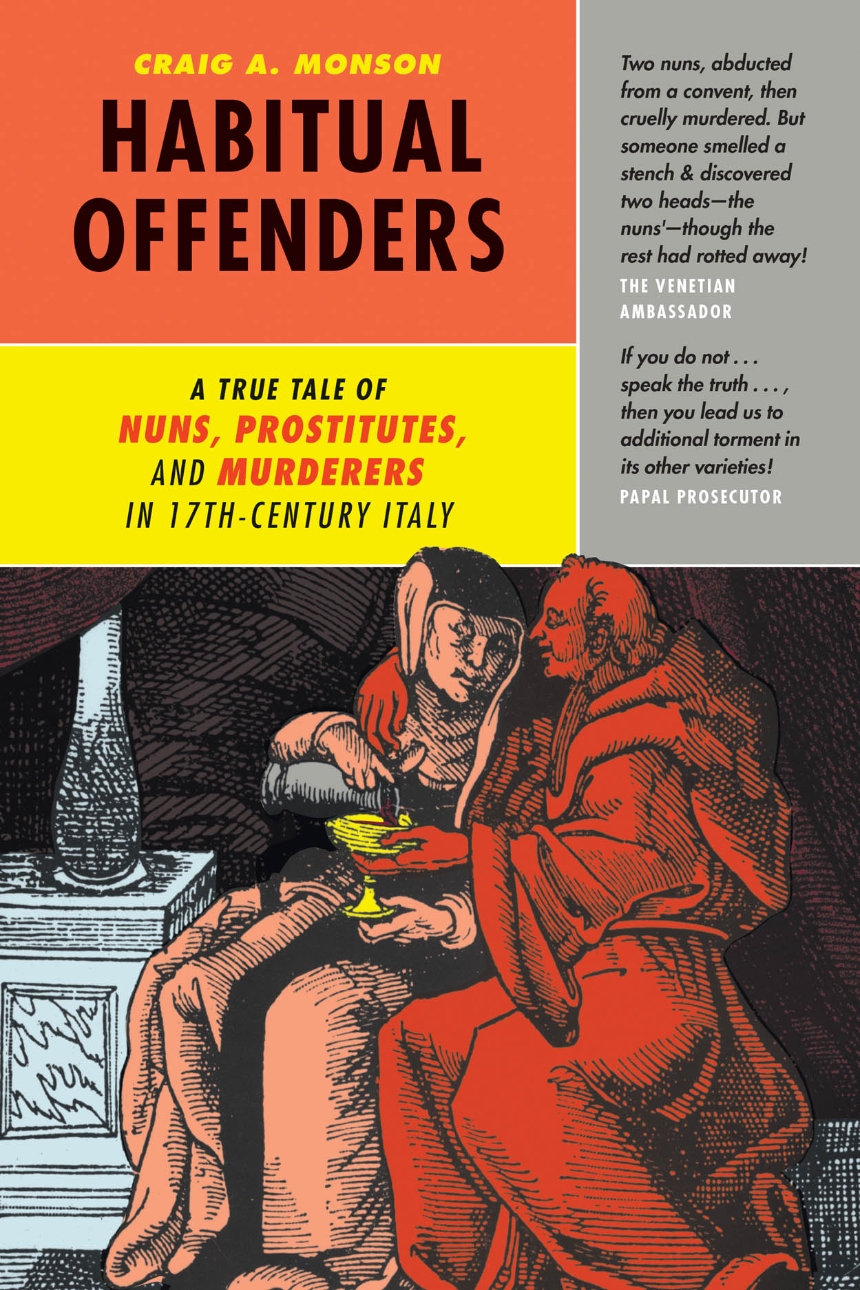Habitual Offenders
A True Tale of Nuns, Prostitutes, and Murderers in Seventeenth-Century Italy
9780226335339
9780226335476
Habitual Offenders
A True Tale of Nuns, Prostitutes, and Murderers in Seventeenth-Century Italy
In April 1644, two nuns fled Bologna’s convent for reformed prostitutes. A perfunctory archiepiscopal investigation went nowhere, and the nuns were quickly forgotten. By June of the next year, however, an overwhelming stench drew a woman to the wine cellar of her Bolognese townhouse, reopened after a two-year absence—where to her horror she discovered the eerily intact, garroted corpses of the two missing women.
Drawing on over four thousand pages of primary sources, the intrepid Craig A. Monson reconstructs this fascinating history of crime and punishment in seventeenth-century Italy. Along the way, he explores Italy’s back streets and back stairs, giving us access to voices we rarely encounter in conventional histories: prostitutes and maidservants, mercenaries and bandits, along with other “dubious” figures negotiating the boundaries of polite society. Painstakingly researched and breathlessly told, Habitual Offenders will delight historians and true-crime fans alike.
Drawing on over four thousand pages of primary sources, the intrepid Craig A. Monson reconstructs this fascinating history of crime and punishment in seventeenth-century Italy. Along the way, he explores Italy’s back streets and back stairs, giving us access to voices we rarely encounter in conventional histories: prostitutes and maidservants, mercenaries and bandits, along with other “dubious” figures negotiating the boundaries of polite society. Painstakingly researched and breathlessly told, Habitual Offenders will delight historians and true-crime fans alike.
344 pages | 29 halftones | 6 x 9 | © 2016
History: European History
Literature and Literary Criticism: Romance Languages
Music: General Music
Religion: Religion and Society
Reviews
Table of Contents
List of Figures
Acknowledgments
Cast of Characters
Timeline
Acknowledgments
Cast of Characters
Timeline
Introduction
Bologna
1 Airing Dirty Linen
2 A Tale of Two Sisters
3 The Soldier of Misfortune and the Tailor’s Son
4 A Grave Mistake
5 Pas devant les Domestiques
6 Novus Homo
7 Light at the Top of the Stairs
Rome
8 Dragnet
9 Cat and Mouse Games
10 Home Court Advantage
Bologna
11 “In This Town They’re All Malicious Liars!”
12 “I Don’t Know This Suor Laura Vittoria!”
13 “Se Sarà Fatto Pamphilio / I Barberini Andrano in Esilio”
14 “A Few Days in Jail for Love of Me”
15 Return to the Scene of the Crime
16 A Gentleman Never Tells
17 Unfinished Business
Epilogue
Abbreviations
Notes
Selected Bibliography
Index
Notes
Selected Bibliography
Index
